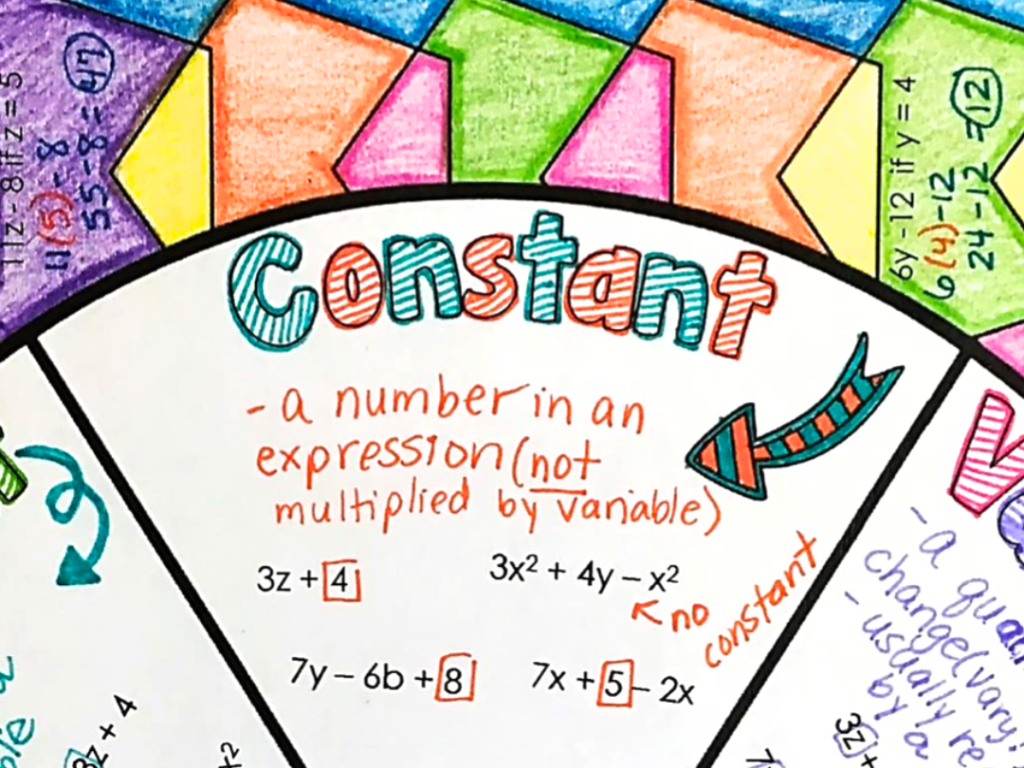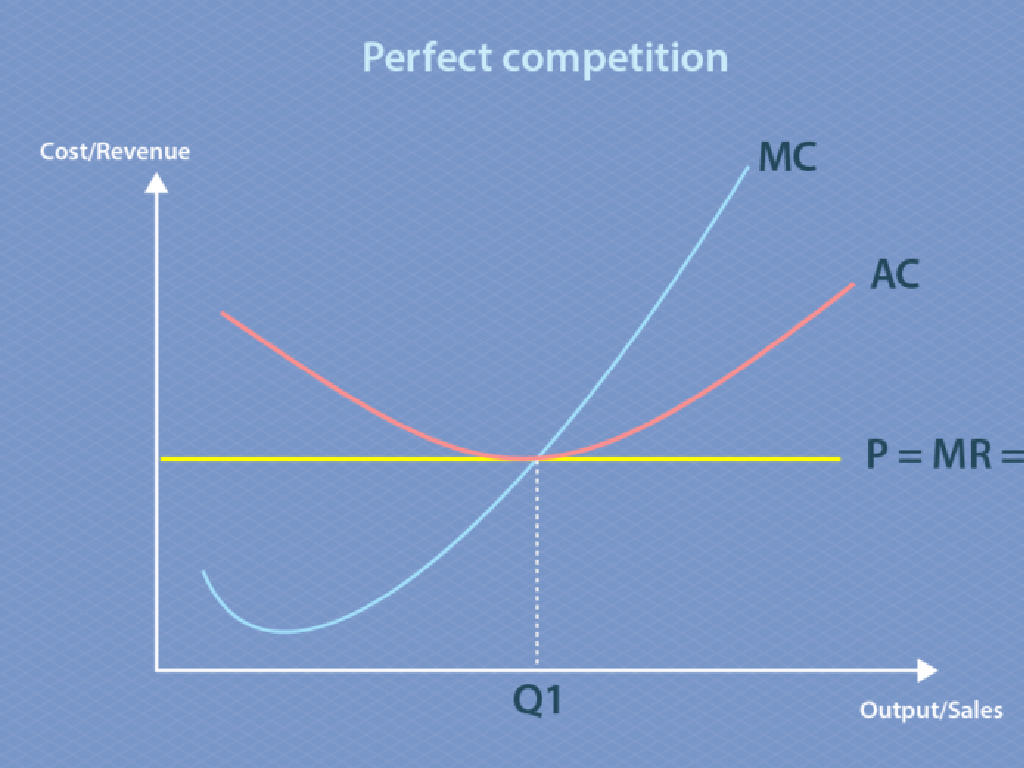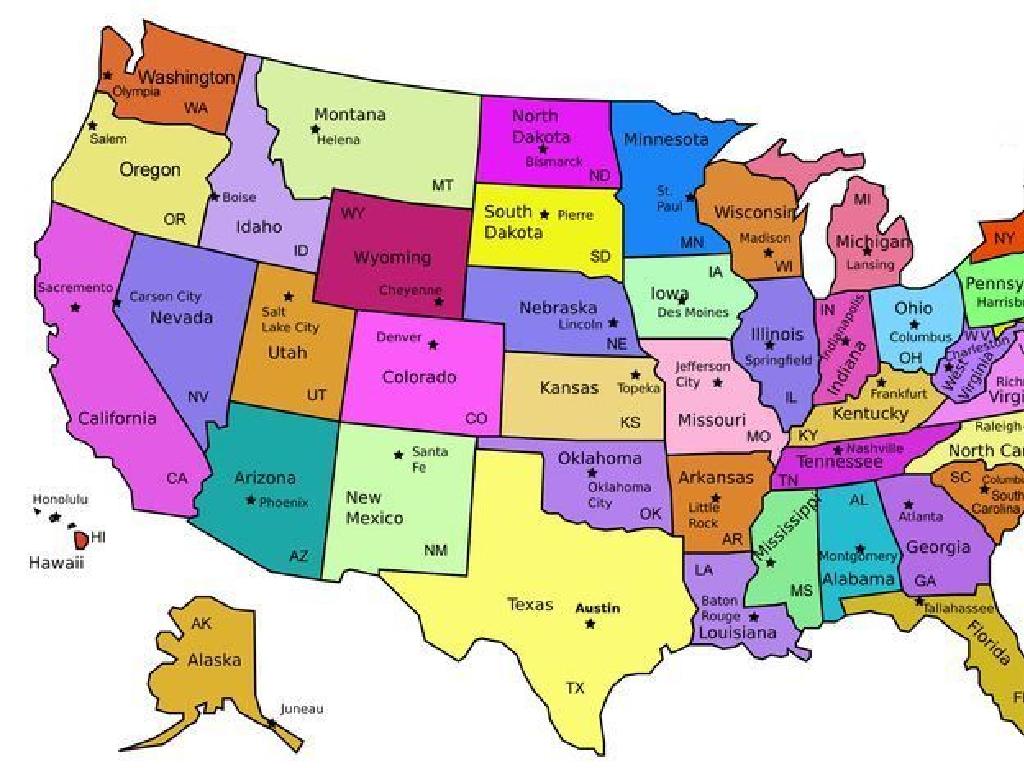Months Of The Year
Subject: Math
Grade: First grade
Topic: Days, Months, And Seasons
Please LOG IN to download the presentation. Access is available to registered users only.
View More Content
Learning the Months of the Year
– 12 months in a year
– January to December, each month is unique.
– Which month is it now?
– Let’s look at the calendar and find today’s month!
– Months mark special days
– Birthdays, holidays like Halloween and Christmas happen in specific months.
– Planning with months
|
This slide introduces the concept of months to first graders. Start by explaining that there are 12 different months in a year, each with its own name. Engage the class by asking them to identify the current month, possibly by looking at a classroom calendar. Highlight how knowing the months helps us recognize when special events and holidays occur, which is exciting for children. Emphasize the practicality of understanding months for planning activities and events. As an activity, you could have students mention events or holidays they know and which month they occur in. This will help them connect the concept of months with their personal experiences.
The 12 Months of the Year
– A year has 12 different months
– Learning each month’s name
– January, February, March, and so on
– Practice saying the months
– We’ll recite the months as a class
– Understanding the month’s order
– Which month comes first? Which is last?
|
This slide introduces the concept of the 12 months of the year to first-grade students. It’s important to emphasize that a year is divided into 12 distinct months, each with its own name. Start by listing the months in order, from January to December, and encourage the students to repeat after you. This will help them memorize the sequence of the months. Engage the class in a fun activity where they say the months together, perhaps even adding a simple song or rhyme to aid in memorization. Finally, discuss the order of the months, asking questions to ensure they understand which month comes at the beginning of the year and which ends it. The goal is to make them comfortable with the names and sequence of the months.
Months of the Year: Winter into Spring
– January: The first month
– It’s usually cold, wear your coat!
– February: Short but sweet
– Only 28 or 29 days and has Valentine’s Day
– March: Spring begins
– Look for flowers starting to bloom
– Remembering the months
|
This slide introduces the first three months of the year, focusing on characteristics that can help students remember them. January is noted for being the start of the year and its cold weather, which can be a cue for discussing winter clothing. February is highlighted for its uniqueness as the shortest month and for Valentine’s Day, which can be an opportunity to talk about love and friendship. March indicates the beginning of spring, a time when flowers bloom, which can lead to a discussion on seasons and plant growth. Encourage students to think of personal events or holidays to help them remember each month. You can also use a song or rhyme to help them memorize the order of the months.
Spring into Summer: April, May, June
– April: Time for showers
– Showers in April help flowers grow. Look for rainbows after rain!
– May: Flowers bloom
– May is colorful with flowers. Notice how it gets warmer.
– June: Summer begins
– School ends and summer starts in June. Time for vacation!
– Remembering the months
|
This slide introduces the transition from spring to summer, covering the months of April, May, and June. Emphasize the typical weather patterns and seasonal changes. Explain how rain in April helps plants grow, leading to the blooming of flowers in May. Discuss the warming temperatures as a sign of the coming summer. Highlight that June marks the beginning of summer vacation, a time many students look forward to. Engage the class by asking them to share their own observations of these months and what they enjoy about the transition from spring to summer. This will help them remember the order of the months and associate them with seasonal events.
Exploring the Months: July, August, September
– July: Summer fun and fireworks
– July 4th celebrates Independence Day with fireworks.
– August: Summer’s final month
– Enjoy the last days of summer break before school.
– September: Back to school
– Time to meet teachers and make new friends.
– Seasons change to Fall
– Leaves change color as the weather cools.
|
This slide introduces the students to the months of July, August, and September, focusing on their significance and seasonal changes. July is characterized by the celebration of Independence Day with fireworks, symbolizing a time of joy and summer activities. August marks the end of summer vacation, a period to cherish the remaining days of freedom and play. September signals the return to school, a time for learning and starting fresh as the season transitions into Fall with observable changes in nature, such as cooler weather and leaves changing colors. Encourage the children to share their own experiences of these months and discuss the changes they observe in the environment.
Exploring the Year: Fall to Winter
– October: Season of Change
– Halloween in October, notice the leaves turning colors.
– November: Time for Gratitude
– Thanksgiving in November, a family gathering time.
– December: Winter Celebrations
– December brings holidays like Christmas and the start of winter.
– Observing the Seasons
|
This slide introduces the last three months of the year, focusing on the changes in seasons and the special holidays that occur. October is notable for Halloween and the visible change in nature as leaves change color. November is a time to reflect on gratitude with family during Thanksgiving. December marks the end of the year with various holidays and the beginning of winter. Encourage students to observe the seasonal changes and discuss the holidays they celebrate. This can be a great opportunity for a class activity where students can draw or describe what they see happening outside as the seasons change or share their own family traditions.
Months and Seasons
– Every season has three months
– Match months with seasons
– Which months are in winter, spring, summer, or fall?
– Group activity
– We’ll work as a team to find matches
– Learning is fun!
– Remember, discovering new things is exciting!
|
This slide introduces the concept of seasons and their corresponding months to first graders. Start by explaining that a year is divided into four seasons: winter, spring, summer, and fall, and each season is made up of three months. Engage the students in a group activity where they match the months to the correct season. This could involve a physical activity with month and season cards or an interactive game. The goal is to make the learning process interactive and enjoyable, reinforcing the association between months and seasons. Encourage participation and praise correct matches to build confidence. Prepare to offer guidance and clarification as needed.
Let’s Practice: Months of the Year!
– I’ll name a month; you say the next!
– What’s after March?
– If I say March, you would say April!
– Which month is before September?
– If I say September, think about the end of summer!
– Practice makes perfect!
|
This interactive slide is designed to engage first graders in practicing the sequence of months. Start by saying a month out loud and prompt the students to tell you what month comes next. This exercise helps them understand the order of the months. For the second question, guide them to think backwards in the year to identify the month that comes before September. Encourage participation from all students and praise their efforts to reinforce learning. You can extend the activity by asking what months come before or after their birthday months or holidays they know.
Class Activity: Birthday Months Chart
– Create a birthday chart together
– Mark birthdays with stickers
– Each student places a sticker on their birth month
– Observe the birthday-filled months
– Look for the month with the most stickers
– Discuss our birthday chart findings
– We’ll talk about which months are most popular for birthdays and why
|
This activity is designed to help students learn the months of the year in a fun and interactive way. By creating a birthday chart, students will visually associate each month with a significant personal event – their birthday. Provide a large chart with all the months and give each student a sticker to place on their birth month. Once everyone has placed their sticker, facilitate a discussion about which months have the most birthdays and why some months might be more common. This activity not only teaches the months but also encourages basic data collection and interpretation, as well as social interaction among classmates.
Celebrating Our Year: Months Mastery
– Congratulations on learning the months!
– Understanding months tracks time
– Months help us organize the year
– Anticipate special days each month
– Birthdays, holidays, and seasons
– Practice makes perfect
|
This slide is a celebratory conclusion to the lesson on the months of the year. It’s important to reinforce the students’ achievement in learning the sequence of the months. Emphasize how knowing the months helps us understand the concept of time and allows us to organize our lives around it. Highlight that each month brings its own special days, like birthdays and holidays, which everyone looks forward to. Encourage the students to keep practicing saying the months in order and to use a calendar to mark important dates. This will help them to become more familiar with the concept of months as they relate to the passage of time and seasonal changes.






